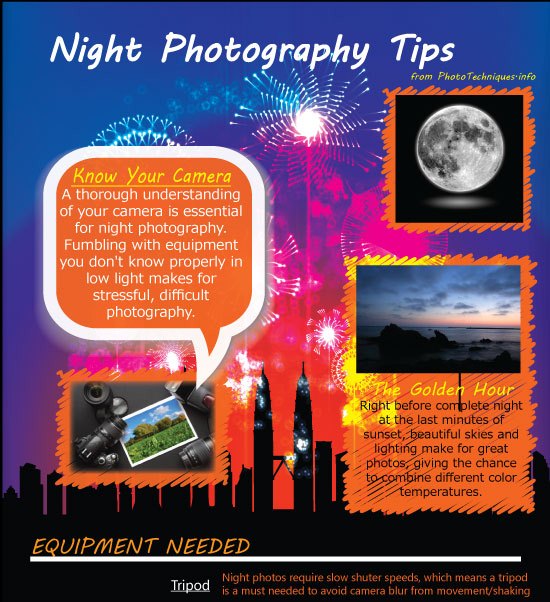Join Us To Discover Important Digital Photography Pointers That Will Certainly Open Your Camera'S Potential-- Prepare To Catch Spectacular Images In No Time At All!
Join Us To Discover Important Digital Photography Pointers That Will Certainly Open Your Camera'S Potential-- Prepare To Catch Spectacular Images In No Time At All!
Blog Article
Created By-Tobin Didriksen
When you first get your cam, it can feel frustrating with all the setups and choices readily available. You could find yourself questioning exactly how to navigate aperture, shutter speed, and ISO successfully. Understanding these basics is critical, yet there's more to digital photography than just technical knowledge. Comprehending structure methods and lights conditions can elevate your images significantly. So, what happens if you could find out easy strategies to enhance your abilities and start catching excellent pictures quicker than you think? Allow's discover exactly how to transform your digital photography trip.
Recognizing Camera Setups
Recognizing your cam setups is essential for recording spectacular photos. When you grab your camera, familiarize yourself with the 3 main settings: aperture, shutter rate, and ISO. Each plays an important function in just how your photos turn out.
Beginning with aperture, which regulates the amount of light getting in the lens. A wider aperture (lower f-number) lets in a lot more light and creates a stunning history blur, excellent for pictures. Conversely, a narrower aperture (greater f-number) maintains more of the scene in focus, perfect for landscapes.
Next, focus on shutter rate. This setup identifies for how long your cam's sensing unit is exposed to light. A quick shutter rate ices up activity, which is wonderful for activity shots, while a sluggish shutter speed can develop stunning results like smooth water in landscapes.
Lastly, adjust your ISO. This setup impacts your cam's sensitivity to light. A higher ISO is useful in low-light scenarios however can introduce sound or grain. Aim for the lowest ISO feasible while still attaining appropriate exposure.
Composition Techniques
When you're out capturing, composition can make all the difference in exactly how your photos resonate with visitors. Start by using the policy of thirds; imagine your framework divided right into 9 equivalent areas with two horizontal and 2 vertical lines. Position key elements along these lines or at their crossways to produce balance and rate of interest.
Next off, consider leading lines. These natural lines in your scene, like roadways or rivers, attract the viewer's eye into the photograph, directing them through the tale you're informing.
Do not forget https://postheaven.net/katy27daryl/essential-photography-equipment-what-you-actually-required-to-begin within your scene, like trees or windows, to create a structure around your subject, including deepness and focus.
Likewise, keep an eye on your background. A messy history can distract from your primary subject, while a simple one aids it attract attention.
Finally, experiment with proportion and patterns; they can develop a striking photo that records interest.
Mastering Illumination Issues
Mastering lights problems is crucial for recording spectacular pictures, as the best light can transform an average scene into something phenomenal.
Begin by observing all-natural light at various times of the day. Early mornings and late afternoons provide the best light, called the golden hour. Get the facts , cozy tones during these times can improve your images magnificently.
Do not avoid cloudy days either; diffused light can lessen harsh darkness and create a pleasing effect, particularly for portraits.
https://writeablog.net/jenna603alphonse/exactly-how-to-locate-your-special-design-as-a-digital-photographer with backlighting by placing your topic versus the light. This strategy can create a fanciful halo impact and include deepness to your pictures.
Take notice of your camera settings also. Readjust the ISO, aperture, and shutter speed to match the illumination conditions. A greater ISO can help in low light, yet beware of grain.
Make use of a tripod in darker atmospheres to prevent blur.
Last but not least, do not neglect fabricated illumination. Flash and continual lights can be terrific tools for controlling light in difficult conditions.
Conclusion
Finally, grasping your camera doesn't need to be frustrating. By understanding your settings, using make-up strategies, and using the power of all-natural light, you'll quickly boost your digital photography abilities. Bear in mind, exercise makes ideal, so go out there and experiment with your newly found knowledge. With time and devotion, you'll be capturing spectacular images that reflect your one-of-a-kind perspective. Enjoy the journey, and don't neglect to enjoy while you're at it!
